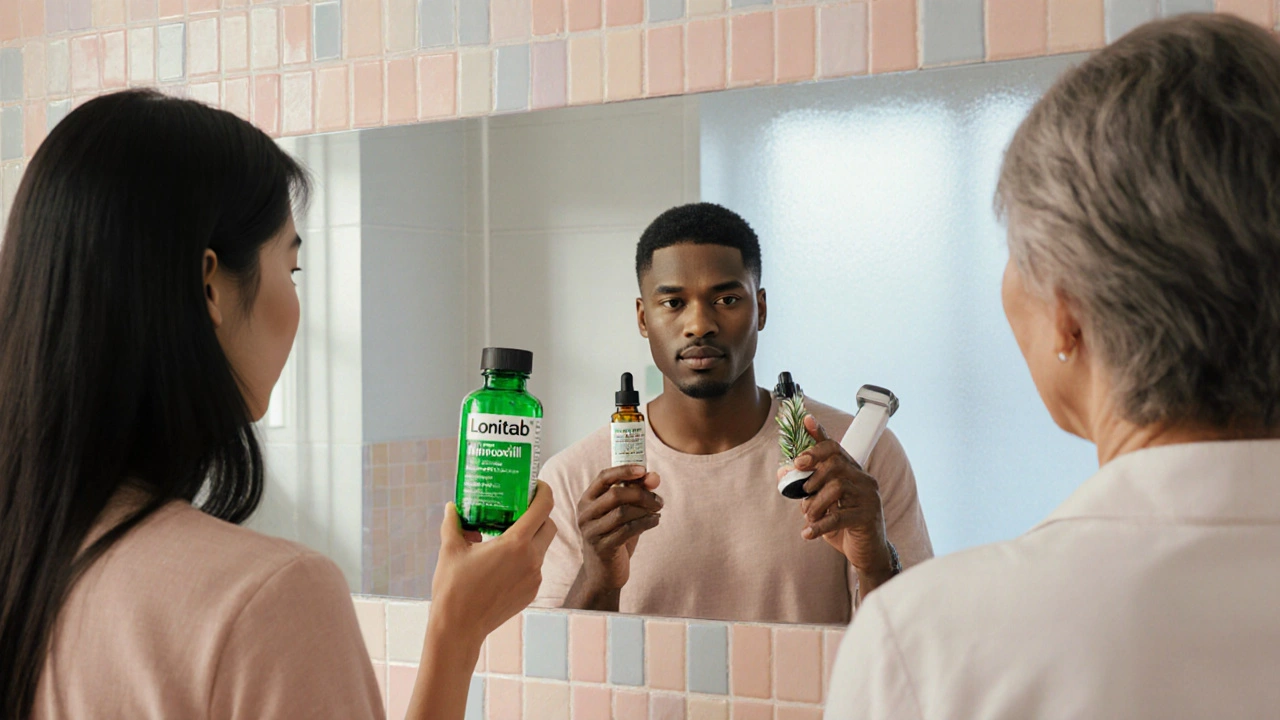
Hair Loss Treatment Comparison Tool
Find out which hair loss treatment suits your needs best by comparing key attributes like cost, effectiveness, and side effects.
Recommended Treatment:
Why It's Recommended:
Key Takeaways
- Lonitab delivers a 5% minoxidil concentration in a foam that dries quickly and minimizes scalp irritation.
- Rogaine offers the same active ingredient but in a liquid format; some users prefer its larger bottle size.
- Generic minoxidil (e.g., Kirkland) matches efficacy at a fraction of the price, though packaging may be less user‑friendly.
- Oral finasteride works on a different hormonal pathway and can be more effective for male pattern baldness, but it carries systemic side effects.
- Natural options such as saw palmetto, PRP therapy, and low‑level laser devices provide modest results and suit those who avoid chemicals.
Hair thinning can feel like a silent confidence thief. When you start Googling solutions, the sea of products makes the decision feel overwhelming. You might have stumbled on Lonitab and wondered how it stacks up against the rest of the market. This guide breaks down the science, costs, and real‑world experiences so you can pick the option that actually works for you.
What Is Lonitab?
Lonitab is a topical minoxidil solution delivered in a fast‑drying foam, formulated at a 5% concentration for men and 2% for women. The foam format is designed to reduce scalp oiliness and flaking, common complaints with traditional liquid minoxidil. Lonitab is marketed in Australia and NewZealand as a prescription‑only product, meaning a pharmacist or doctor must endorse its use.Clinical trials for minoxidil consistently show a 30‑45% increase in hair count after four months of twice‑daily use. Lonitab’s main selling point is its user‑friendly applicator, which helps maintain consistent dosing-a critical factor for any hair‑loss regimen.
How Minoxidil Works (The Basics)
Minoxidil is a vasodilator that was originally developed to treat high blood pressure. When applied to the scalp, it widens blood vessels, improving nutrient delivery to hair follicles. This boost prolongs the anagen (growth) phase and can revive shrunken follicles, especially in the crown area.
Because the mechanism is local, side effects are usually limited to scalp irritation, itching, or a temporary increase in shedding during the first weeks.
Top Alternatives to Lonitab
Below are the most common contenders you’ll encounter when researching hair‑loss solutions. Each entry includes a brief definition with microdata so search engines recognize the entities.
Rogaine is a brand‑name minoxidil product available in both liquid and foam, typically at a 5% concentration for men. It’s sold over‑the‑counter in many countries, making it the most widely recognized topical treatment. Kirkland Minoxidil is a generic minoxidil foam sold in large 12‑month supplies. The active ingredient and concentration mirror Rogaine, but the price point is dramatically lower. Finasteride (often marketed as Propecia) is an oral 5‑alpha‑reductase inhibitor that reduces dihydrotestosterone (DHT) levels, a hormonal driver of male pattern baldness. Saw Palmetto is a plant‑based supplement believed to block DHT conversion naturally. It’s taken as a capsule or softgel and is popular among users preferring a non‑prescription approach. Platelet‑Rich Plasma (PRP) Therapy is an in‑office procedure where a patient’s own blood is spun to concentrate platelets, then injected into the scalp to stimulate growth factors. Low‑Level Laser Therapy (LLLT) is a non‑invasive treatment using red‑light lasers or LEDs to boost cellular activity in hair follicles. Hair Transplant Surgery is a surgical relocation of healthy donor follicles to balding zones, offering permanent results for suitable candidates.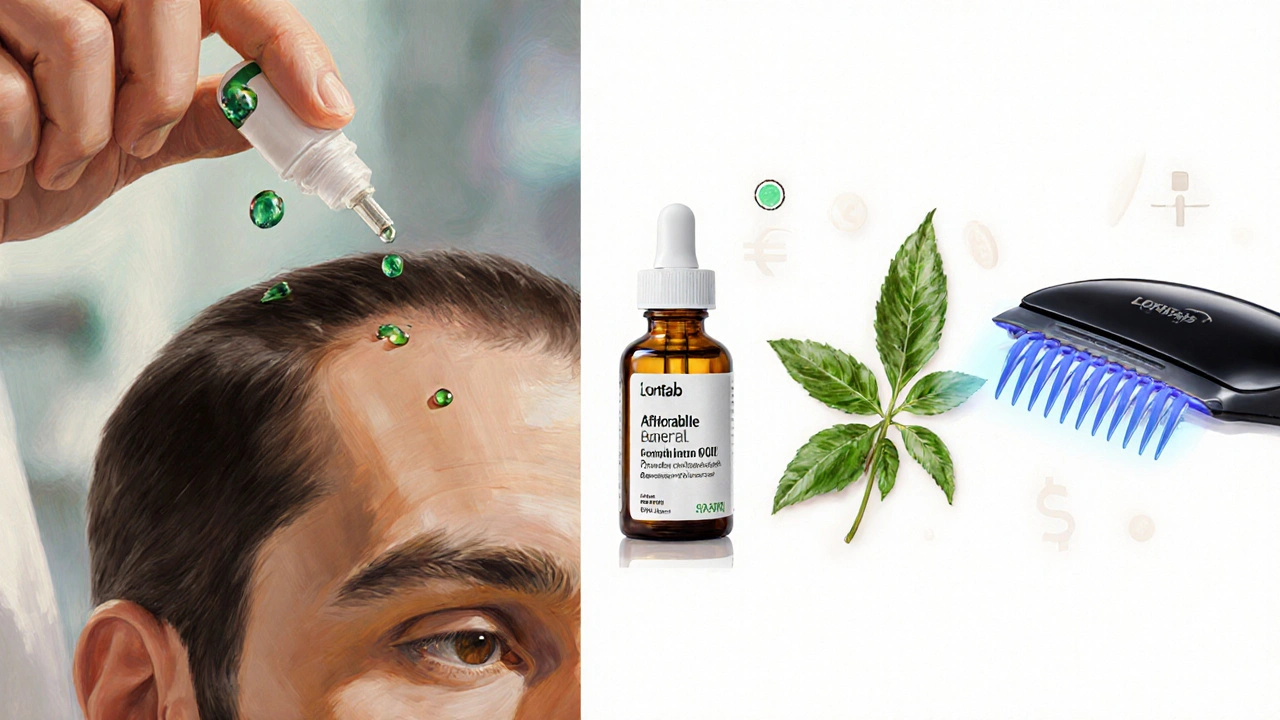
Side‑by‑Side Comparison
| Product | Form | Mechanism | Typical Cost* (AU$) | Clinical Efficacy | Main Side Effects | Best For |
|---|---|---|---|---|---|---|
| Lonitab | Foam (topical) | Vasodilation → longer anagen phase | ≈ $120/month (prescribed) | 30‑45% hair‑count increase | Scalp itching, temporary shedding | Users wanting a prescription‑grade foam |
| Rogaine (foam) | Foam (topical) | Same as minoxidil | ≈ $90/month (OTC) | 30‑45% similar to Lonitab | Similar scalp irritation | First‑time users preferring OTC |
| Kirkland Minoxidil | Foam (topical) | Same as minoxidil | ≈ $25/month (large 12‑mo pack) | 30‑45% comparable | Potentially lower‑quality packaging | Budget‑conscious users |
| Finasteride (1mg) | Oral tablet | DHT inhibition | ≈ $30‑$45/month (prescription) | 40‑60% reduction in hair loss | Sexual dysfunction, mood changes | Men with moderate‑to‑advanced pattern baldness |
| Saw Palmetto | Oral supplement | Natural DHT blocker | ≈ $20‑$35/month | ~10‑15% modest improvement | Rare GI upset | Those avoiding prescription meds |
| PRP Therapy | In‑office procedure | Growth‑factor release | ≈ $1,200‑$2,500 per series (3‑4 sessions) | 20‑30% increase in density | Temporary soreness, redness | Patients seeking natural, non‑surgical boost |
| LLLT Devices | Hand‑held or helmet (LED/laser) | Photobiomodulation → cellular metabolism | ≈ $300‑$1,500 one‑time | 10‑25% improvement (varies) | Eye strain if misused | Tech‑savvy users preferring at‑home treatment |
| Hair Transplant | Surgical | Permanent follicle relocation | ≈ $8,000‑$15,000 (full session) | ~100% permanent coverage of donor grafts | Scarring, post‑op care | Advanced hair loss, realistic budget |
*Costs are average Australian retail prices as of 2025 and may vary by clinic or retailer.
Decision Guide: Which Option Fits Your Lifestyle?
- First‑time user or mild thinning? Start with a topical minoxidil foam like Lonitab or Rogaine. The learning curve is low, and you can gauge results in 4‑6 months.
- Price‑sensitive? Kirkland’s generic foam delivers the same active ingredient for a fraction of the cost. Just be prepared for a bulkier bottle and occasional packaging quirks.
- Looking for faster, stronger results? Combine oral finasteride with a topical minoxidil (doctor‑approved). This combo tackles hair loss from both hormonal and follicle‑stimulation angles.
- Want to avoid chemicals? Natural DHT blockers like saw palmetto or low‑level laser therapy offer modest gains without prescription meds.
- Prefer a clinical procedure? PRP and LLLT are good middle‑ground options-effective enough for many, but they require regular sessions or a higher upfront spend.
- Seeking a permanent fix? Hair transplant surgery remains the gold standard for lasting density, assuming you have sufficient donor hair and the budget.
Pros and Cons of Lonitab Compared to Each Alternative
- Rogaine vs. Lonitab: Same active ingredient; Lonitab’s prescription status can mean stricter quality control, but Rogaine’s OTC availability makes it easier to start instantly.
- Kirkland vs. Lonitab: Kirkland wins on price, but Lonitab’s foam texture reduces scalp oiliness and may improve adherence for users who dislike the greasy feel of cheaper foams.
- Finasteride vs. Lonitab: Finasteride often yields higher hair‑loss reduction, yet it carries systemic risks that many find unacceptable. Lonitab stays local to the scalp.
- Saw Palmetto vs. Lonitab: Natural supplements lack the robust clinical data that minoxidil boasts; Lonitab’s results are more predictable.
- PRP Therapy vs. Lonitab: PRP can boost density quicker for some, but it’s costly and requires clinic visits. Lonitab offers a daily at‑home routine.
- LLLT Devices vs. Lonitab: LLLT is a hands‑off nightly routine, but outcomes vary widely. Lonabot’s foam ensures a measured dose each application.
- Hair Transplant vs. Lonitab: Transplants provide permanent coverage but are expensive and surgical. Lonitab is non‑invasive, reversible, and suitable for early‑stage thinning.
Practical Tips for Using Lonitab Effectively
- Apply to dry scalp-wait at least 30minutes after showering.
- Dispense the recommended 1ml (about half a capful) onto your fingertips.
- Massage gently into the affected area; avoid rubbing vigorously, which can irritate the skin.
- Wash hands after each use to prevent accidental contact with eyes.
- Stick to a twice‑daily schedule; consistency trumps occasional high‑dose attempts.
- Allow 2‑4weeks for initial shedding; this is a sign the follicles are resetting.
- Schedule a follow‑up with your pharmacist or dermatologist after 4months to evaluate progress.
Frequently Asked Questions
Can I use Lonitab and finasteride together?
Yes, many dermatologists prescribe the combo because they work on different pathways-topical minoxidil stimulates follicle growth while oral finasteride reduces DHT. Always get medical clearance first.
How long before I see results with Lonitab?
Most users notice reduced shedding after 2‑3months and visible regrowth by month4‑6. Patience is key-stopping early resets progress.
Is Lonitab safe for women?
Lonitab is available in a 2% formulation for women, which reduces the risk of side effects like unwanted facial hair. Consult a pharmacist to ensure it’s appropriate for your condition.
Why does my scalp itch after applying Lonitab?
Mild irritation is common with minoxidil. Using the foam version (as opposed to liquid) tends to be gentler. If itching persists, try applying a light moisturizer after the foam dries or discuss a lower concentration with your doctor.
Can I switch from Kirkland to Lonitab without a break?
Absolutely. Since both products contain the same active ingredient, you can transition seamlessly. Just follow Lonitab’s dosing instructions and stop using the generic once the foam is applied.

Next Steps
Grab a bottle of Lonitab (or a comparable foam) from your local pharmacy and start the twice‑daily routine. Track your progress with photos every two weeks-you’ll be surprised how visible the changes become after a few months. If you hit a plateau, revisit the comparison table above and consider adding an oral option or a procedural supplement.
Remember, hair‑loss treatment isn’t a one‑size‑fits‑all. Use this guide to match the product to your goals, budget, and tolerance. Consistency, realistic expectations, and a bit of patience are the real keys to keeping your confidence full‑headed.

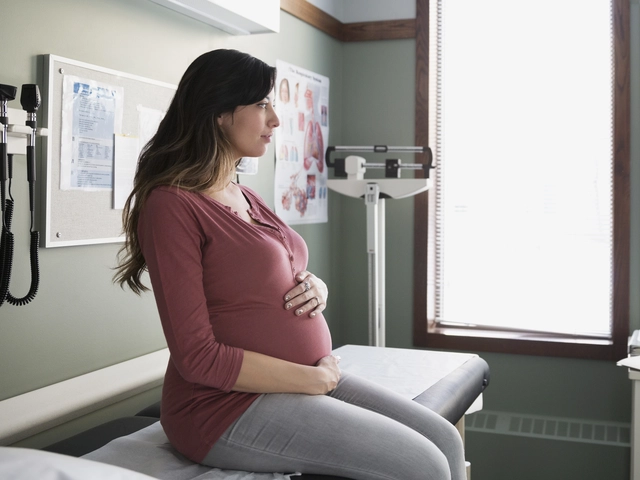
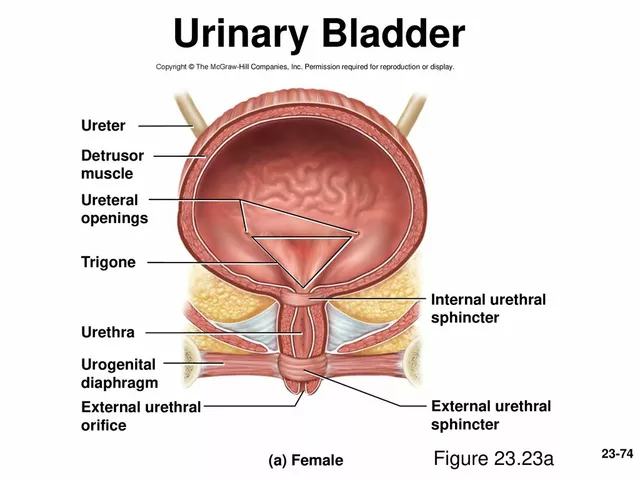
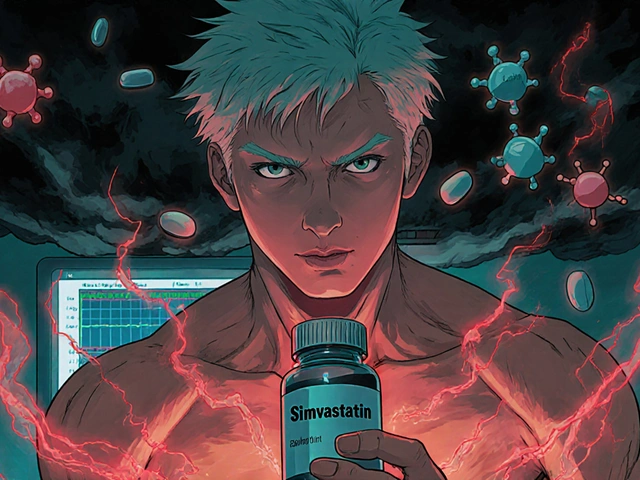

Matthew Balbuena
September 28, 2025 AT 00:00Great breakdown, thanks for the info!
michael abrefa busia
October 1, 2025 AT 16:30I love how you laid out the numbers – makes choosing a product way less stressful 😅💪
Bansari Patel
October 4, 2025 AT 18:47Look, the hair‑loss market is a circus full of hype and half‑cooked science.
People rush to grasp at any foam or pill that promises a miracle, ignoring the fact that most of these solutions are just placebo‑tainted marketing tricks.
Lonitab, for all its prescription veneer, is still a minoxidil formulation that does exactly what Rogaine does – it dilates scalp vessels and nudges follicles into gear.
The price premium you pay for a brand name in Australia doesn't magically boost efficacy beyond the 30‑45% range the data shows.
If you’re willing to spend $120 a month, you could also buy a six‑month supply of Kirkland for a fraction of that cost and achieve the same hair‑count gain.
The real differentiator is consistency, not the fancy packaging or the pharmacist’s stamp.
When you apply a foam twice daily, the scalp sees a steady dose; skip days and you’ll see shedding spike.
Finasteride, on the other hand, attacks the hormonal root cause, but it drags you into systemic side effects that many are not willing to accept.
PRP and LLLT sit in a gray zone of modest gains and hefty price tags, often marketed to desperate consumers.
Hair transplants deliver permanent coverage, yet they demand a serious bankroll and donor hair availability.
Your budget, your tolerance for side effects, and how far your hair loss has progressed should dictate the choice, not the hype.
If you’re truly budget‑conscious, start with Kirkland, monitor results, and only upgrade if you need a prescription‑grade foam for compliance reasons.
If you can afford a combo, adding a low dose of finasteride amplifies the effect without blowing up the cost curve.
In short, Lonitab isn’t a magic bullet; it’s a respectable, prescription‑level minoxidil that competes on parity, not superiority.
Don’t let the branding lull you into thinking you’ve found the holy grail of hair growth.
Make the decision based on numbers, side‑effect profiles, and personal commitment, and you’ll avoid the common pitfall of chasing the next shiny product.
Rebecca Fuentes
October 5, 2025 AT 15:07Your analysis provides a comprehensive perspective on the cost‑effectiveness of the various options.
Jacqueline D Greenberg
October 6, 2025 AT 14:14Totally agree – it’s easy to get swayed by fancy branding, but sticking to the basics usually wins in the long run.
Jim MacMillan
October 7, 2025 AT 13:20One must appreciate that the pharmacokinetic profile of minoxidil remains unchanged irrespective of branding; the empirical data speaks for itself 🧐💊
Dorothy Anne
October 8, 2025 AT 12:27If you keep up the twice‑daily routine, you’ll start seeing those fine hairs popping up before you know it!
True Bryant
October 9, 2025 AT 11:33In the context of dermal microcirculation modulation, adherence supersedes any singular dosage escalation.
Danielle Greco
October 10, 2025 AT 10:40This table is like a cheat‑code for our wallets and follicles! 🎮💸
Linda van der Weide
October 11, 2025 AT 09:46Interesting breakdown, especially the note on packaging quirks for Kirkland.
Philippa Berry Smith
October 12, 2025 AT 08:53Sure, the pharma giants want us to think only the pricey stuff works, but the data is out there for anyone who looks.
Joel Ouedraogo
October 13, 2025 AT 07:59One might argue that the pursuit of hair is a metaphor for confronting impermanence itself.
Beth Lyon
October 14, 2025 AT 07:06I think the foam format helps because it dont make your hair greasy.
Nondumiso Sotsaka
October 15, 2025 AT 06:12Great points! 🙌 Anyone tried mixing a low‑dose finasteride with Lonitab? Would love to hear real‑world experiences.
Ashley Allen
October 16, 2025 AT 05:19Budget‑friendly options win when consistency is maintained.
Brufsky Oxford
October 17, 2025 AT 04:25★ The essence of hair growth lies not only in chemicals but in the rhythm of our daily habits. ^_^
Lisa Friedman
October 18, 2025 AT 03:32Fact: minoxidil’s efficacy caps around 45% regardless of brand, so don’t expect miracles.